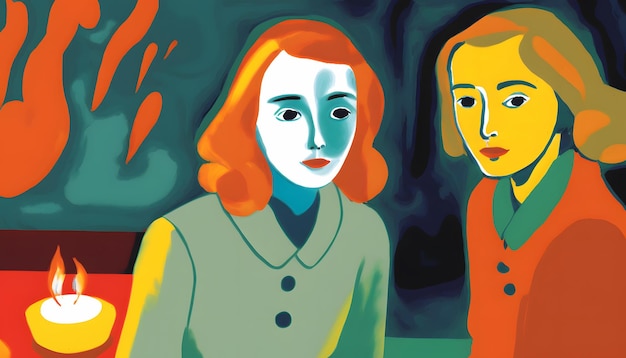German Expressionism: The Artistic Treasures of Berlin and Munich


German Expressionism mainly started with the founding of the “Die Brucke” movement. In 1905, in Dresden, a group of four German artists—Fritz Bley, Erich Heckel, Ernst Ludwig Kirchner, and Karl Schmidt-Rottluff—formed this movement. Die Brucke was known for its unique style featuring vivid colors, emotional tension, and intense imagery, drawing some inspiration from primitivism. You can see many of their works in museums in Berlin and Munich.
If you’re planning to visit Germany, it’s worth noting that Munich’s Art Gallery is divided into three main museums: the Pinakothek der Moderne, the Alte Pinakothek, and the Neue Pinakothek.
The Pinakothek der Moderne is Germany’s largest museum of international modern and contemporary art, including drawings, graphics, architecture, and design. Its striking feature is a 25-meter-high glass dome, which serves as the starting point for all tours of the building.
The museum showcases works by various famous artists, including Flemish Primitives, Cranach, Durer, Botticelli, Raphael, Tintoretto, Titian, Velazquez, Monet, Cezanne, and Van Gogh. Some masterpieces here include “The Crowning with Thorns” by Titian, “The Virgin and Child” by Leonardo da Vinci, and “Le Pont d’Argenteuil” by Claude Monet.
The Alte Pinakothek was constructed by King Ludwig I of Bavaria and opened in 1836. After being heavily damaged during World War II, it was rebuilt in 1957 by Hans Dollgast using bricks for some sections of the facade. The museum is an example of post-war reconstruction and houses European artworks from the fourteenth to the eighteenth century, including early German and Flemish pieces.
Founded in 1826 by Ludwig I, the Munich Pinakothek boasts one of the world’s largest classical art collections, rivaling the Prado, the National Gallery, and the Louvre. The Neue Pinakothek, opened in 1981, replaced the original 1853 building destroyed in World War II. It houses works from the post-French Revolution era (1790) to Symbolism and Liberty (1910). Renowned architect Hans Dollgast led its reconstruction, while the new building was designed by Alexander von Branca.
The Neue Pinakothek’s modern architecture includes a variety of well-lit rooms, perfectly designed for the artworks on display. The museum also holds significant 19th-century paintings and sculptures, emphasizing French impressionists. Artists featured include Caspar David Friedrich, Arnold Bocklin, Karl F. Schinkel, and Max Beckmann. Notable pieces are “Monaco by the Sea” by Friedrich and “The Isle of the Dead” by Bocklin.
Located on Museum Island in central Berlin, the Pergamon Museum is one of the world’s largest collections of antiquities, named after the ancient city of Pergamon. The museum consists of three main collections, including the famed Altar of Zeus taken with the permission of Sultan Abdul Hamid. Additionally, the Museum of the Middle East covers over 4000 years of regional history, featuring Babylonian art.
The Islamic Museum section of the Pergamon Museum showcases carpets, miniatures, and photographs that narrate the history of the Sassanid Empire and other Islamic civilizations. Masterpieces here include the Altar of Pergamon, the Roman Market Gate of Millet, and the Ishtar Gate and Babylon procession path.
By Niko K